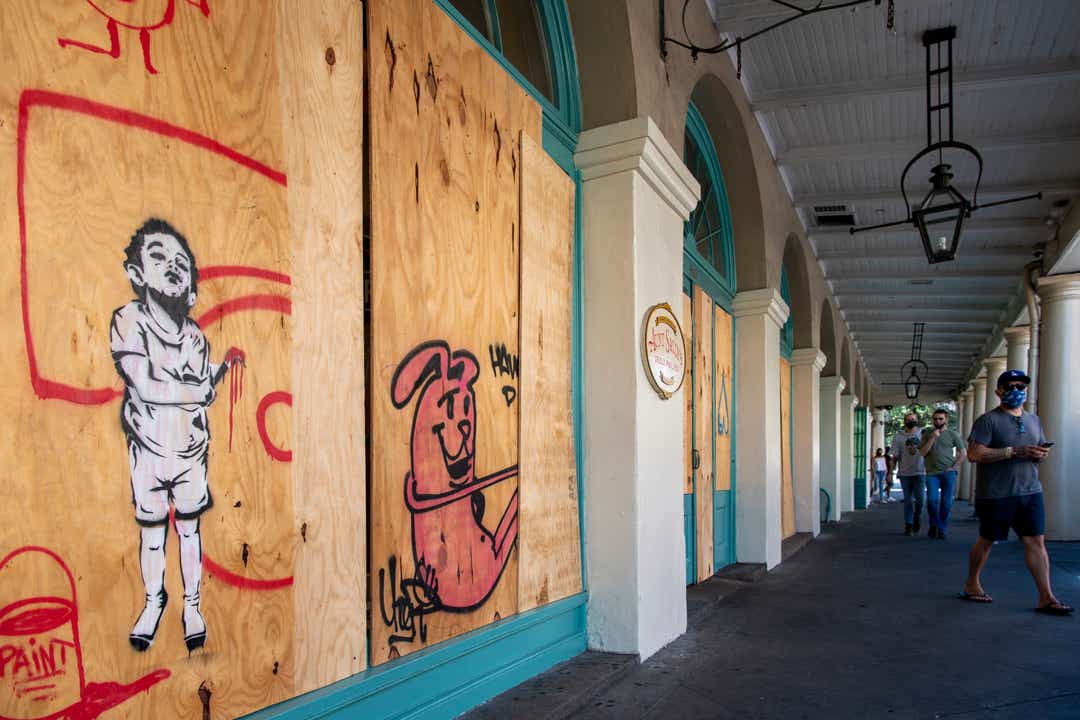Hundreds of thousands ordered to evacuate as Hurricane Laura a now forecast to be a catastrophic Category 4 hurricane
Doyle Rice USA TODAY
Published 10:10 AM EDT Aug 26, 2020
Hurricane Laura is increasing in strength and is rapidly swirling to be a "catastrophic" Category 4 storm, the National Hurricane Center has warned. It could bring life-threatening storm surge, fierce wind and flash flooding to the Gulf Coast.
It has undergone a remarkable intensification, “and there are no signs it will stop soon,” the National Hurricane Center said in a briefing early Wednesday.
Wednesday's storm updates: Get the latest news on Laura as it strengthens
After Tropical Storm Marco fizzled in the Gulf Coast on Monday night, Laura is poised to deliver a devastating blow late Wednesday and early Thursday.
"Residents along the Texas and Louisiana coasts should anticipate the possibility that Laura will rapidly intensify right up until landfall," said meteorologist Jeff Masters of Yale Climate Connections.
Hurricane warnings and storm surge warnings have been issued for portions of the Texas and Louisiana coasts. On its way to the U.S., Laura killed at least 23 people in the Dominican Republic and Haiti.
Hurricane Laura could undergo 'rapid intensification' before landfall: Here's why that could be so dangerous
More than half a million people were ordered to evacuate as the storm approached, including the Texas cities of Beaumont, Galveston and Port Arthur.
“If you decide to stay, you’re staying on your own,” Port Arthur Mayor Thurman Bartie said.
The low-lying industrial city was mostly boarded up and deserted by Tuesday night.
Emergency officials with Jefferson County, which includes Port Arthur, staged a number of “hubs” to collect residents and transport them to other areas around Texas, rather than shelter them here, said Allison Getz, a county spokeswoman. A key reason for doing it that way was concerns over the coronavirus pandemic, which makes it hard to shelter large groups of people in one place, she said. Only 15 to 20 people will be placed on buses, instead of the usual 50, she said.
“This is not just a flood like we’ve experienced in the past,” Getz said. “It has a wind component that really could be deadly.”

At the Robert A. “Bob” Bowers Civic Center, 14 tour buses lined up to ferry away residents who couldn’t evacuate themselves, many of them elderly or handicapped. Robert Bailey, 68, has lived in Port Arthur since he was 9 and has stayed for every storm that’s hit the area – until now.
“This is a double whammy,” he said as he boarded a bus headed for Huntsville, Texas, with friend Louise Green. “We don’t know what it’s going to be like.”
Not everyone was leaving. Simike Babineaux, 38, filled sandbags at a pavilion in downtown Port Arthur as her two kids, Hayden, 8, and Haleigh, 7, happily climbed the mounds of sand. Babineaux said she would like to get out of Port Arthur but was afraid of exposing her children to the coronavirus during evacuation.
“It’s stressful,” she said. “You want to go but you don’t want to go because you might get [the virus]. So, we’re probably going to ride it out.”
15 years and $15B since Katrina: New Orleans is more prepared for a major hurricane. For now.
On top of the fierce winds, Laura is expected to bring a huge storm surge of Gulf sea water ashore, forecasters warned, potentially as high as 13 feet near the Texas/Louisiana border.
"There is a danger of life-threatening storm surge over a large portion of the Gulf Coast from San Luis Pass, Texas, to the mouth of the Mississippi River, and a storm surge warning is in effect for this area," the Hurricane Center said.
In addition to the surge, up to 15 inches of rain could fall in some spots in Louisiana.

State emergencies were declared in Louisiana and Mississippi, and shelters were opened with cots set farther apart, among other measures designed to curb coronavirus infections.
The most recent major hurricane to make landfall in Texas was Harvey in 2017, with 130 mph maximum winds, said Colorado State University meteorologist Phil Klotzbach. In Louisiana, it was Rita in 2005, with 115 mph maximum winds.
The Atlantic hurricane season has been a record-breaker. Laura is the earliest L-named storm in the Atlantic Basin, breaking a record held by Luis, which formed Aug. 29, 1995. This season has had 13 named storms, which is well above-normal activity.
Contributing: Rick Jervis and Steve Kiggins, USA TODAY; The Associated Press
tinyurlis.gdu.nuclck.ruulvis.net
